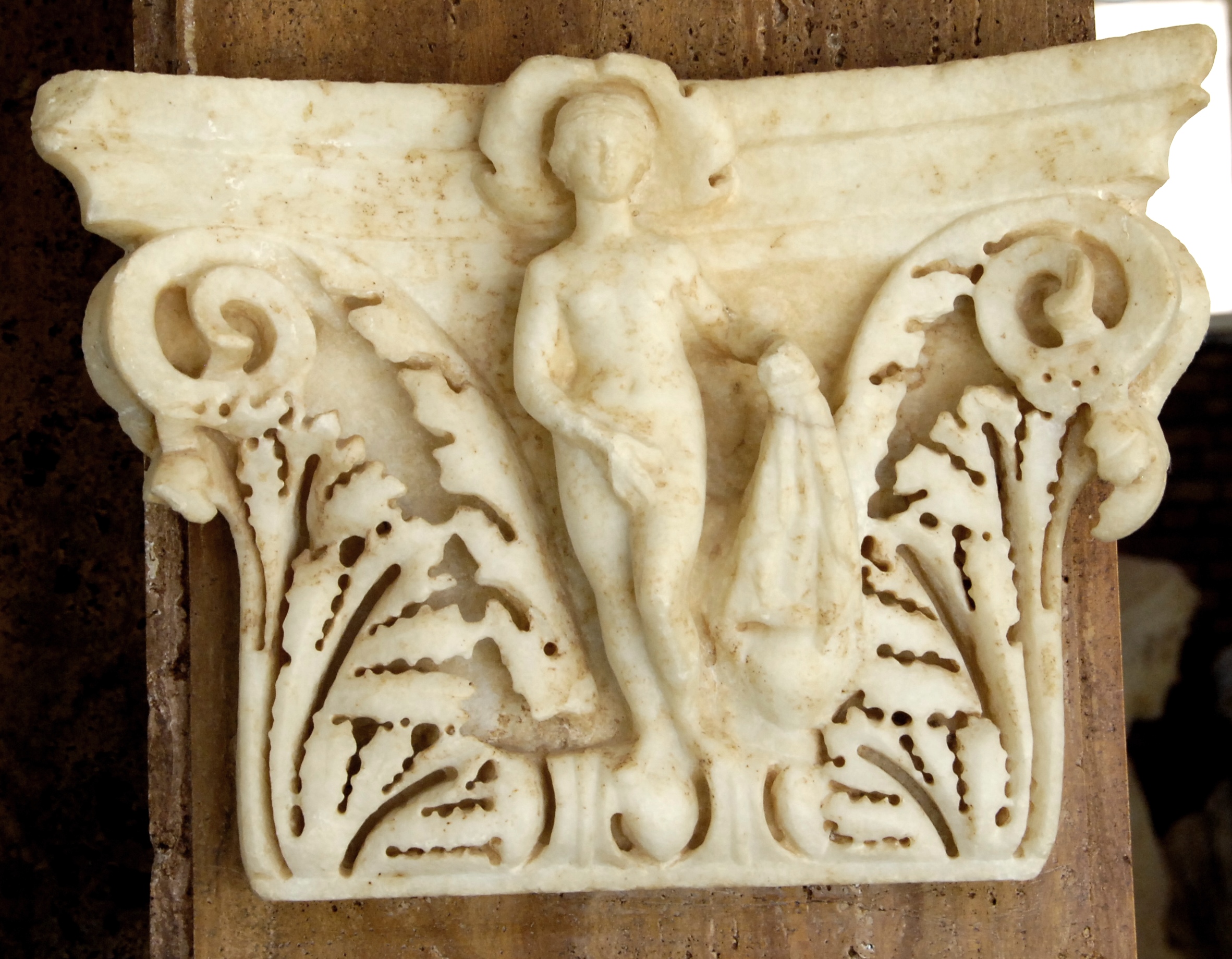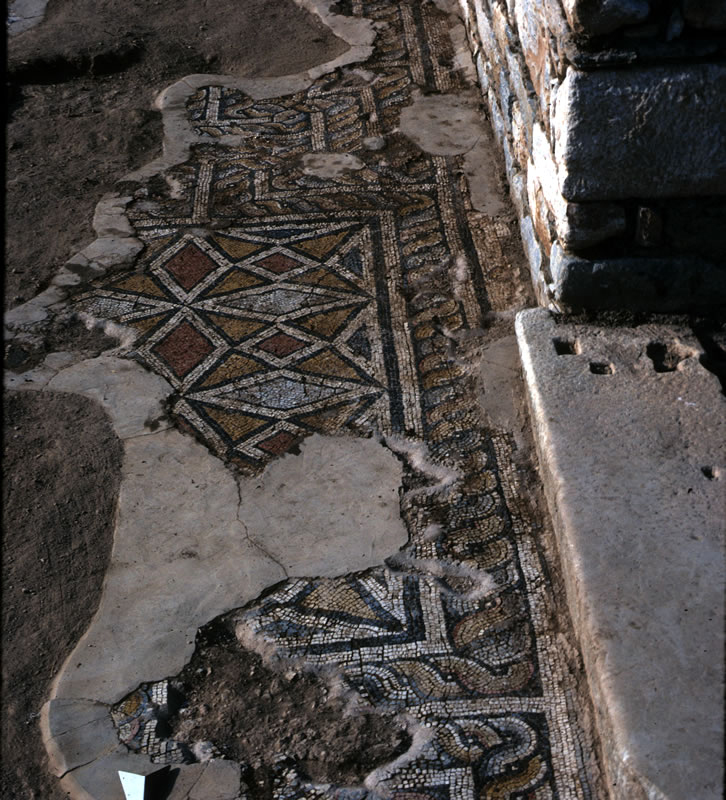North Temenos House
The North Temenos House is situated directly north of the Temple of Aphrodite, a prime location. The main surviving elements of the house are two small courtyards surrounded by suites of rooms and a large, apsidal hall. The marble floor of the apsidal hall is well-preserved, and many fragments of its elaborate marble wall decoration were found during the excavation. Pottery finds show that the house remained in use at least until the sixth century AD and occupation continued into the early medieval period (seventh to ninth centuries).
The visible remains include a corridor (I on plan, formerly part of a peristyle), an entrance court with mosaic floor and a shallow pool at its centre (II), a large apsidal dining and reception room (III), and a more private four-columned courtyard with small rooms opening off it (IV). The reception room was entered from the court with pool and was decorated with a marble-tiled floor and elaborate marble wall panelling that included pilaster capitals decorated with divine figures such as Aphrodite and Apollo.
Recent geophysical research north and east of the house, combined with excavation have shown that the house was much larger than the part currently exposed. There were large open colonnaded spaces to the east and to the north of the reception hall. A round statue base of the late antique period was set up in the northeast corner of the entrance court (II). It was inscribed in Latin, the language of Roman government, and shows that this house was probably the residence of the late Roman governor.
New work in the North Temenos House aims to understand its full extent and phasing, its chronology and function, and to study and publish the structure and its finds. Large parts of the house were excavated between 1965 and 1967, and further documentation work was undertaken in 1995 and 1996. The new project is part of a programme of research into housing and living in Aphrodisias, from the later Roman into the Byzantine period. Despite its size and prominent position, the house remains essentially unstudied and unpublished. New excavations, conceived in conjunction with a new programme of geophysical survey, were begun in 2023.









